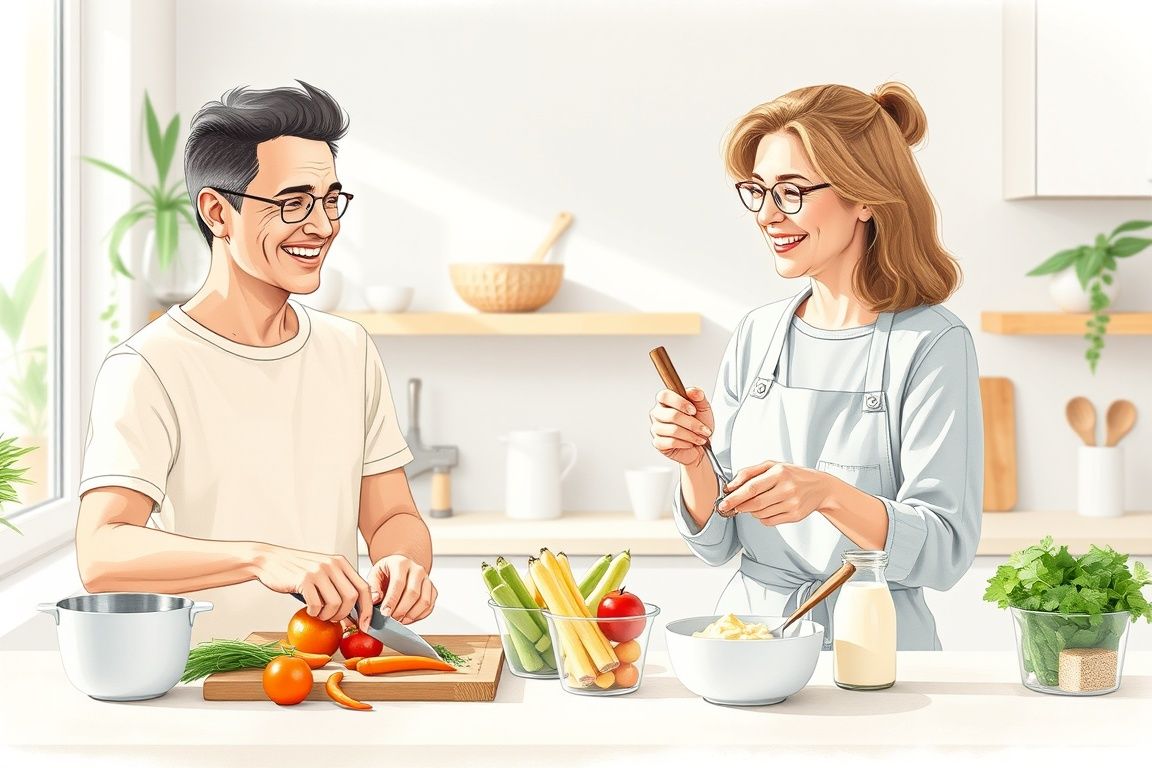Cooking for Special Diets and Allergies
Why It’s Worth It
Learn practical cooking techniques tailored for gluten-free, dairy-free, and low-sodium diets, ensuring healthier meal choices.
Gain confidence in adapting recipes and managing food allergies, enhancing your culinary skills for a variety of diets.
Receive guidance on meal planning and food safety, making it easier to prepare delicious meals that cater to multiple dietary restrictions.
Your Learning Roadmap
Foundations of Special Diets and Allergies
In this module, students will be introduced to the essential principles of special diets including gluten-free, dairy-free, and low-sodium practices. They will learn about common allergens, the importance of cross-contamination prevention, and how dietary needs shape cooking techniques and ingredient choices. The module sets the stage with frameworks adapted from popular texts like The Gluten-Free Bible and The Food Allergy Cookbook, ensuring a strong theoretical basis before practical application. Overview of Special Diets and Allergies Principles of Gluten-Free, Dairy-Free, and Low-Sodium Cooking Cross-Contamination and Allergen Management
Gluten-Free Cooking Techniques
This module delves into the world of gluten-free cooking by examining specialized ingredients and methods. It covers the selection of alternative flours, adjustments in texture and taste, and troubleshooting common issues in gluten-free recipes. Drawing on frameworks from The Gluten-Free Bible, students will gain confidence in transforming traditional recipes into gluten-safe versions. Gluten-Free Flour Alternatives and Baking Techniques for Gluten-Free Cooking Troubleshooting Common Gluten-Free Challenges
Dairy-Free Cooking and Substitutions
Focusing on the challenges of dairy allergies and lactose intolerance, this module addresses the practicalities of avoiding dairy in recipes. Students will learn about various substitution options like almond and soy products, and the adjustments required in cooking processes. Insights drawn from The Food Allergy Cookbook help illuminate safe and tasty alternatives. Understanding Dairy Allergies and Intolerances Dairy-Free Ingredients and Alternatives Techniques for Adjusting Cooking Methods Without Dairy
Low-Sodium Cooking Strategies
This module focuses on understanding sodium's role in our diet and offers innovative techniques to cut down on salt. Students will learn methods to enhance flavor using herbs and spices and how to modify existing recipes for a healthier sodium profile. Perspectives from Low-Sodium Cooking Essentials are integrated to provide practical, health-conscious cooking strategies. Understanding Sodium and Its Health Impacts Flavor Enhancement Without Salt Practical Tips for Low-Sodium Cooking
Accommodating Multiple Dietary Needs
This module integrates knowledge from previous sections, focusing on how to manage multiple dietary requirements simultaneously. Students will learn how to plan balanced meals that cater to gluten-free, dairy-free, and low-sodium needs while preventing cross-contamination. The content stresses practical planning, safety measures, and adaptive cooking techniques, drawing insights from comprehensive guides like The Food Allergy Cookbook. Meal Planning for Mixed Dietary Needs Preventing Cross-Contamination in the Kitchen Adapting Recipes for Multiple Allergies
Recipe Development and Practical Applications
In the final module, students merge theory and practice by developing, modifying, and perfecting recipes for special dietary requirements. They learn to analyze ingredient roles and craft new dishes that achieve nutritional balance, safety, and appealing presentation. The module emphasizes hands-on creativity supported by frameworks from well-regarded culinary texts, preparing participants for real-world cooking challenges. Analyzing and Modifying Recipes Creating New Recipes for Special Diets Presentation, Feedback, and Continuous Improvement
What Users Are Saying
All You Need to Know
Start Cooking Smart!
Interactive AI assistance for real-time learning
Customizable meal planning strategies
Focus on cross-contamination prevention techniques
Hands-on recipe adaptation and development
Engaging, supportive learning environment
Flexible pacing to fit your schedule

